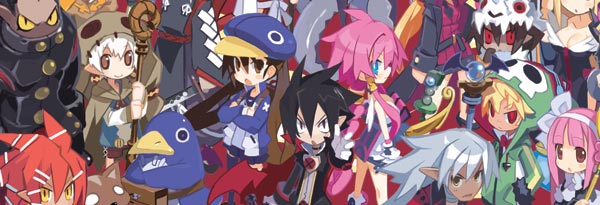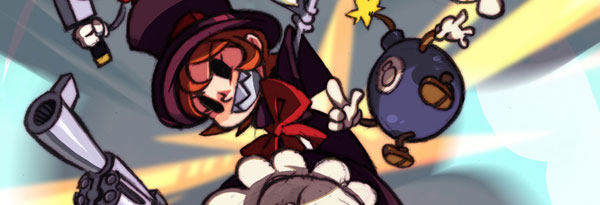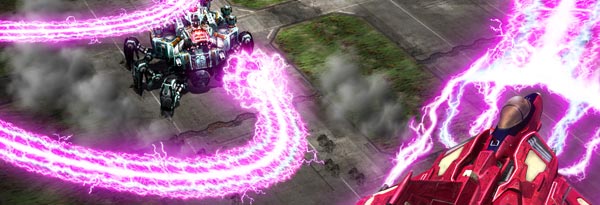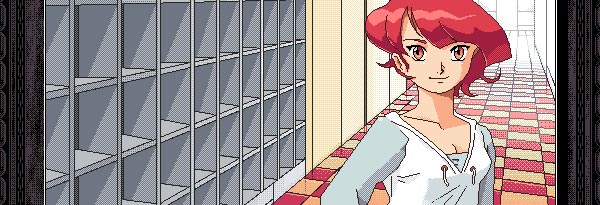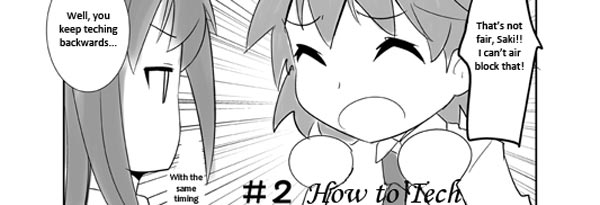review: Little King’s Story (Wii)

Publisher: XSEED Games, Marvelous Entertainment
Developer: Cing, Town Factory
Genre: RPG, RTS
Take a look at the cover art up above. The fairytale setting features a king, a princess, an old knight on a cow, a dragon, farm animals, and townsfolk going about their everyday lives. It's an image that hints at a family-friendly game that children and their parents can enjoy together. But if one were to look past the fuzzy feelgood picture and take a closer look at the actual game, he or she will find that it belies Little King's Story's true nature - that of a hardcore game with story elements that brush up on taboos that nobody would expect.
Corobo is a timid boy who until recently has lived a fairly unremarkable life. This all changed the day he found a magical crown that gave him the ability to get others to do what he wants, whether they want to or not. With his newfound powers in tow, he decides to lead the citizens of the rundown kingdom of Alpoko on a mission to unify the land. His quest to unite the world will lead to encounters with Unidentified Mysterious Animals, or UMA, that live on the outskirts of Alpoko. As if that weren't enough, he also has to overcome the seven kings of the seven kingdoms of the land as well as rescue and marry the princesses that they have imprisoned. As you make your way through the game, you'll witness the growth of Corobo's kingdom from a simple village to an empire that covers the entire known world.
Much of the story is told through dialog between Corobo, his friends Verde and Liam, and Howser, his adviser. There are also a few minor characters here and there that will offer their thoughts on what is going on as well, including the princesses, a religious nut, a scientist who isn't right in the head, and, of course, the citizens of your kingdom. There certainly isn't as epic a story as one would find in your typical RPG, but there are enough plot twists that happen during the course of Little King's Story that help to keep things interesting. And I must say that the final twist - the explanation for all the weirdness that you see throughout the game - made for one of the most memorable endings that I've seen in a long time.
Before getting anything done in Little King's Story, you have to form a party. Your success is highly dependent on who you bring along and what their profession is, so you must choose wisely depending on the situation. Recruiting is as simple as going up to someone and pressing a button. After being chosen, the new members will form a queue behind you. Once you have some of your countrymen (and women) in tow, you can send them running in any direction using the charge command. If they happen to run into something that they can interact with, say a hole that can be explored, an enemy that needs to be attacked, or a rock that is in the way, they will do what is necessary to the best of their abilities. Luckily, you can dial through your party members based on profession, so you can usually find the type of worker that you need quickly. If you want them to return for any reason, all you have to do is issue the retreat command. That command is especially important in battles as permanent death can result if you allow enough of your followers to die. Granted, you can always gain new citizens by getting people married or by building houses, but it never feels right when you're told that someone won't be coming back.
Party members will fall into one of three formations once recruited - attack, guard, and evade (you get the attack formation when you start out and learn the other two later). With attack, your party members form rows behind you. As you turn, they will do their best to maintain the formation. It is actually quite satisfying to see an attack coming, position yourself in a way that keeps your party members from being hit, completely avoid the attack, and then counter attack. Guard has your loyal followers forming a circle around you. While I found it useful for some of the more hectic battles, I usually just stuck to attack. One problem with the guard and attack formations is that because your followers are spread over a large area when using said formations, they will often get stuck behind walls or fall off cliffs. Since their pathfinding abilities leave much to be desired, you will either have to go back for them or keep going and wait for them to magically reappear later. This problem can be avoided by using the evade formation when you are not in battle as with evade your minions will all follow you in a single-file line.
Since the game does not make use of the Wii's IR functionality, aiming is done by either eyeballing it and hoping that you get lucky or by activating Target Mode, an option that creates a line with which you can determine your line of fire. The line automatically locks on to nearby objects, which is a great help since it takes some of the guesswork out of aiming. Pointing the line at something also reveals how much energy it has or how much work is required to clear it, so there really is no reason not to use Target Mode all the time. For the most part, Little King's Story's pointerless controls work very well. I will admit that there were times when I thought that having a pointer would have been nice - more than once I found myself dodging an attack, quickly turning to face my opponent, and launching everything I had only to find that I was not locked on, which led to me missing an opportunity to do major damage. It's no deal-breaker for sure and if there was ever a sequel I'd rather the developers keep things the same and just improve the lock-on accuracy, but having the option to use the pointer for emergencies might be nice.
In the beginning, all of the citizens are merely "carefree adults" who can only dig holes. Once enough Bol (Little King's Story's form of currency) has been acquired and the correct buildings have been built, they can learn different jobs. As one would expect, each job class allows workers to do some things better than others. Farmers, for example, can dig holes faster and are more likely to find better items. Soldiers, on the other hand, cannot dig and are only suited for combat and destroying things. Farmers can attack as well, but they are not as effective as soldiers. While you can teach someone a different job at any time, learning costs money (with the exception of farmers and soldiers). So, you can't go around changing professions on a whim. As you explore the world outside your kingdom you will often run into obstacles that cannot be overcome until you have access to certain jobs. Fortunately, more job types will show up as you expand your territory. As a result, you will often find yourself going back to places that you had already visited in order to open up new areas. Fans of Super Metroid and Castlevania: SOTN-style backtracking will appreciate how well the mechanic works here.
Deciding who to bring along is easy enough when you start out since there are only a few people and professions to choose from. Unfortunately, forming the perfect party becomes a chore once you expand your kingdom since your citizens tend to move around a lot. This can be remedied by purchasing the podium, an upgrade that allows you to call your citizens to you. With it, you can bring up your current party, otherwise known as your royal guard, or call citizens who have jobs in some preset categories such as "battle," "cultivation," and "construction." You still have to manually add new party members with the recruit command, so unless you are forming parties that only contain one specific job class, recruiting remains tedious. Fortunately, a much easier way to form diverse parties exists in the form of the podium's citizen list. With it, you can add and remove royal guard members by going through a list that can be reordered by categories like "job," "name," and "life." While an improvement over manually recruiting, it is still unintuitive and time consuming. Assigning power-up items to members of the royal guard is equally frustrating. All this wouldn't be so bad if you at least had the ability to save your favorite party configurations. But, since there is no such option, you are forced to reform your parties from scratch all the time.
If you aren't walking around town or exploring the outside world, you are probably in your castle deciding what your next move will be. Luckily, you have your three ministers on hand to help you out. Records Minister Verde is who you go to when you want to check on the status of your citizens. She will show you demographic information like population numbers, what your citizens think about you, and job distribution. She is also the one that you go to when you need to save your game. Anything Minister Liam is essentially the in-game manual - he will tell you all about how to control Corobo, what each job does, the differences between the three formations, and much more. You can go to him when you need to equip your royal guard as well, but his usefulness in that department goes away once you get the podium; you will have no need to talk to him once you learn how things work. Bull Knight Howser is the most important person in your close circle of friends as he is who you go to for starting quests, getting tips on defeating your major enemies, and constructing buildings or buying upgrades.
When you talk to Howser about new missions, he will present you with letters that your citizens have sent to you by way of suggestion box. Most of them ask you to seek and destroy UMA, but every once in a while you'll get some odd ones like meeting other people, finding items, and paying your ministers for all their hard work. The UMA extermination missions will start to repeat themselves after a little while (though the wording and location is usually different), but since they're more or less optional, you can accept them at your leisure. However, since you are rewarded for completing requests with both money and items, it really isn't a good idea to completely skip them. Some letters will ask you to take out stronger UMA called Guardians. Each Guardian offers a unique challenge and is much more difficult to deal with than regular UMA. Their defeat means more territory for your kingdom, and consequently, more building, upgrade, and job options. The types of enemies that you encounter are varied, but most can be defeated using the same pattern - charge in and attack when an opening presents itself, wait until the last second before the enemy becomes enraged and counter attacks, issue the retreat command to call your troops back, rinse, and repeat. Having to take this more methodical approach rather than mashing the charge button all the time makes the experience much more satisfying.
One thing that I'm sure that everyone who has played through LKS can agree with is that the encounters with the other kings make for some fairly off-the-wall boss battles. From playing pinball with Shiskebaboo, to answering Omlet's questions, to testing your geographic skills with TV Dinnah, or to just simply ascending Sauvage's mountain, this is one of the few games where I simply did not know what to expect when going into a boss fight. Everything about the battles - the strange preceding cut scenes, the mannerisms of the kings, the music, the divergent challenges that each of them offers - everything is done in such a way that you will not forget about them any time soon. But don't expect them to be a walk in the park just because they're weird, as it is painfully obvious that the developers did not skimp out on providing a challenge. Though you get hints from the suggestion box on how to take the kings out, you probably won't defeat them on your first try. Or your second. Or maybe even your third since they can get pretty difficult. Thankfully, most have a weakness or pattern that can be exploited, and it's pretty satisfying once you figure them out. My only complaint is that there is one battle in which winning seemed to be based more on luck than skill, and another that was a little bit of both.
While you have to explicitly agree to take on stronger UMA and Guardians, you can pretty much fight most of the kings at any time, provided that you can get to them with your current jobs options. In fact, with the exception of the Onii King, you can actually exterminate of all the guardians, expand most of your kingdom, and pretty much finish off the Kingdom Plan before tackling the other rulers of the land. Since the other leaders can be pretty difficult to defeat, especially if it's your first time, having the option to take them on at full strength makes things a little easier.
As mentioned earlier, Howser is also the go-to guy for building structures and buying upgrades for your party as he was the one who came up with the kingdom plan, a list of things that can be done to make Alpoko the greatest kingdom in the world. This list includes the various structures that you can option for like housing and job training facilities. There is also the podium that we talked about earlier and the jump canon that allows you to get to different places in the world quickly. You also consult the kingdom plan to improve your party - it's where you can purchase new formations, increase the number of people that you can enlist, add more life points, and get equipment. More options are added to the plan as you work your way through the game, so you will find yourself looking back often to see what new goodies Howser has in store for you.
While LKS does not sport graphics with the visual clarity one would find on other consoles, it more than makes up for it with a stylistic and artistic approach that mops the floor with a lot of games out there.
Upon starting a new game, the player is immediately treated to the first of many cutscenes that will be shown throughout LKS. This clip, as well as all of the ones that follow, is presented with an oil painting effect that looks great, surprisingly does not feel out of place, and actually complements the rest of the game's visual style. The introductions to the bosses in particular are very well done and showcase their personalities perfectly. My only gripe is that the cutscenes cannot be skipped before boss battles. Obviously, you wouldn't want to miss them the first time around and maybe even the second, but if you're forced to watch the same video over and over again instead of being able to get back into the fight right away, it will start to get on your nerves.
Your kingdom is brought to life by the people who live in it. At any given moment, you'll see your followers going about their everyday lives - farmers milking cows, soldiers practicing their swordplay against trees, archers doing target practice, carpenters laying blankets on the ground and smoking, people randomly conversing. So it feels like you're in a living world. It also helps that each town has its own distinct look. For example, Magical Land looks like a Halloween theme park, Farmland has a ranch, crops, and farm animals walking around, and Glamour Town sports a theater, features colorful housing, and is overrun with purple umbrellas, crystals, and fountains. Castle Town is always bustling with activity and continually gets better looking every time your castle gets upgraded. Each area sports different architecture and none of the buildings look exactly the same, which is pretty impressive seeing as how there are a lot of them.
The various kings and UMA that you encounter are unique and show a lot of creativity on the part of the developers. I especially enjoyed finding all the different flavors of Onii that inhabit the land. From the strange animals, to the weird plant life, to scary fungii, to the undead, there isn't anything ordinary about your enemies.
Throughout the game you'll see many small features that help to enhance the experience. One in particular is the news ticker that appears in the middle of the screen every morning. It does a good job of letting the player know what is going on in the world in an unobtrusive way. Another is the way your followers age as they take damage as it helps you to gauge how well (or badly) you are doing in battle. I'd honestly rather have health gauges for all of the characters, but considering the strain that would put on the system, it is an OK alternative.
As much as I like how everything looks and feels, there are some problems that need to be addressed. One of my main beefs is the blur filter that is laid over the entire game. I can see how the developers did it to smooth everything out, but the effect made it feel like my vision was going bad. Another minor annoyance is the occasional use of fixed camera angles in certain parts of the game. It makes sense for some of the boss battles, but when you are out in the world or in a town, it can get annoying, especially when you need to target something that is being blocked by something else. One more problem is how the system slows down when you are lugging thirty members around. It's slight, but noticeable. Luckily, it only seems to happen when you're walking through a busy town.
The soundtrack is made up of classical music that has been rearranged by Yutaka Minobe (Skies of Arcadia, Panzer Dragoon Orta, Space Channel 5, NiGHTS, Rule of Rose) and Yoko Shimomura (Kingdom Hearts, Super Mario RPG) specifically for Little King's Story. Some of the songs that I recognized off the top of my head include Chanson du Toreador, Dance of the Little Swans, Rhapsody in Blue, Gnossienne No. 1, Habanera, Dance of the Sugar Plum Fairy, William Tell Overture, and Bolero. All of the songs complement the setting they are used in perfectly. Many of the boss battles in particular are made much more enjoyable by the upbeat rearrangements that are played in the background. Some may argue that it's a waste to not have great talents like Yutaka and Yoko create original music, but I think that that's doing them a disservice as they actually had to do a lot to make the music work in every situation. Overall, the soundtrack is at a level where Marvelous should consider putting it on iTunes. It really is that good.
As far as the sound effects go, there isn't anything that stands out. They aren't bad, but they aren't particularly great either. I do like how the attacking and construction sounds vary depending on how many of your followers are being used. It's pretty satisfying when you cover large enemies with soldiers and actually hear more swords hitting the target. Speech is all in gibberish save for the voiceover in the intro. Of course it would have been better if we got full voiceovers, but at least the developers gave the kings and main characters their own voices. There are also several shared voices amongst your followers as well, so you aren't just hearing the same sounds coming out of everyone's mouths. A nice touch that I've noticed is that every once in a while you'll hear real words from different languages mixed in with the gibberish. The languages used seem to be dependent on the characters' job or the kingdom they are from. So far, I've heard Japanese, German, Spanish, and French and I'm sure that there are more that I'm not aware of. It's not a big deal, but it is kind of cool.
For the most part, LKS' level progression is satisfying. You'll find yourself accepting and completing major and minor quests at a decent clip, and since each quest has its own difficulty rating, you can accept them when you feel that you are ready. If you want more of a challenge, you can take the kings out when their land opens up. Or, if you want to get stronger first, you can fully develop your kingdom - purchase all the jobs, erect every building, upgrade your followers - and then destroy them. Taking the middle road and alternating between fighting the kings and developing your kingdom is also an option. If you want to mix things up even more, you can take on some of the collection quests that come your way. Finding different jewels, listening to other people hum music, obtaining different foods, cataloging all the UMA of the land, and finding paintings that were actual submissions for a real-life contest are just some of the things you can look forward to doing. There's a lot of flexibility, so things don't usually stay monotonous unless that's your wish.
If you know what you're doing, you can beat Little King's Story in around twenty hours. Obviously, you'd have to skip out on all the extra quests and just do the bare minimum. If, on the other hand, you want to get your money's worth by doing the extra quests, the game can last you well over forty hours. It took me forty-five to complete LKS on normal my first time through, and I didn't even finish half of the collection quests. Even after spending that much time on the game, I can still see myself going back and collecting all the music and paintings since those interest me.
Those wanting to get even more out of Little King's Story after beating it can always try "Tyrant" mode, a much harder version of the game where everyone starts off with one life point. While your followers can eventually gain more life, you will be stuck with one point for the entire game. The other difference, and what made a second playthrough worth it for me, was the ability to start conversations with Pancho, Howser's bull. He'll talk about a few things, including how the Onii use "ganja pickles" to create UMA, how he wants you to kick a certain king's ass, and how it's ok to quit when you're tired.
Little King's Story is easily one of the best third-party games on the Wii. The story is good, the combination of RPG and RTS elements make playing it both fun and rewarding, the visuals are unique and memorable, and the music is amongst the finest you will hear this generation. Other than the targeting problems and the unintuitive royal guard selection process, there really isn't much to complain about. All aspects of the game, from kingdom management to battling, are well thought out. If you can get past its cutesy look, you will see that Little King's Story is definitely not your typical Wii game.
tags: Little King's Story



